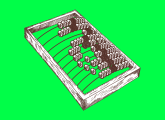Outside isn’t only a place for playing and planting – there are plenty of opportunities for making music too, says Learning Through Landscapes…
Taking music outside allows space for children to move, to make a noise, to experiment with sound and enjoy different aspects of listening to and making music with fewer restrictions than inside. If it is incorporated into a setting every day, it can have a real impact on both the children and adults.
Your team may feel they haven’t got the skills or confidence to incorporate music into everyday practice but, as the following examples from settings already making music every day demonstrate, a little bit of thought is all it takes.
A practitioner works with a child who is pulling a trolley up a hill then rolling it back down again. As the boy pulls the trolley up the slope she sings, “Pull it up, pull it up, pull it up”, each time raising the pitch of her voice as the trolley moves upwards. Then, as the boy pushes the trolley back down the slope, she sings “Wheeeeee!”, lowering the pitch of her voice as she goes. This is repeated several times.
A practitioner sits with a group of children on an area of decking. This has a corrugated surface to it. Children have sticks in their hands, as does the practitioner. All of them experiment with scraping the sticks across the ridges, the practitioner mimicking the actions of the children to encourage them to continue experimenting with sound.
At the end of the day there is a musical signal to tell everyone this is the time to tidy up. At first a practitioner makes the sound – a rattle or a bang on a gong – then, after a while, the children take it in turns to get the tidying started. They use a song to support the clearing away, naming the different objects through the words of the song.
A practitioner hides something outside and sings a song that sets the children off to find it. The song is made up by the practitioner and sung to a familiar tune. Later, children are practising throwing and catching with a practitioner. She introduces a counting song as they throw and catch the beanbag.
It’s easy to create a musical outdoors! Think about the variety of sounds you want children to be able to create, and ways of helping them listen and differentiate between sounds they hear around them and the sounds they create themselves. Position ‘instruments’ so that they are easily accessed and can be incorporated into everyday experiences, and provide a range of sound-making options: n It might sound simple, but pebbles banged together make a lovely sound, and large water containers filled with pebbles or water are great for younger children to roll around. Don’t forget other natural resources such as sticks, giant seed pods, tin drums and coconut shells.
Singing familiar songs and making up new songs to fit occasions is the most joyful aspect of keeping children’s concentration on their chosen task, such as when children are putting on their clothes to go outside to play. Don’t forget, babies love music too – and singing rhymes while changing a nappy is a great way of distracting little ones.

Early years policy – Where has the last decade left us?
Editors picks

Diversity in Early Years – Why it’s so important
Editors picks
